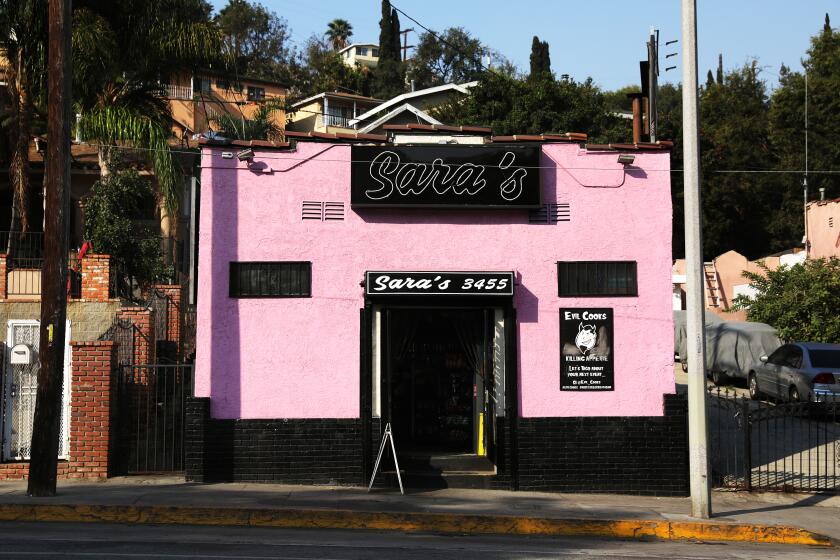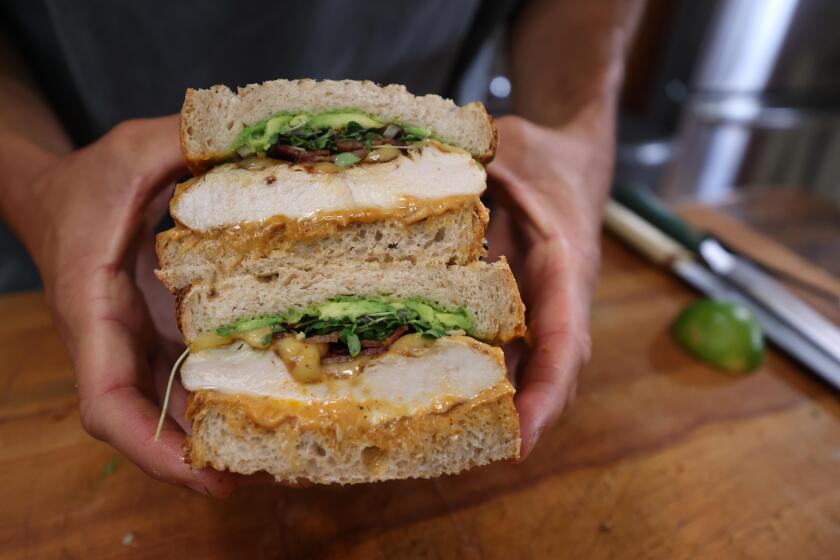Agave’s sweet success
A sweetener made from the juice of a Mexican cactus is an increasingly common ingredient in bottled teas, energy drinks, nutrition bars and desserts from health food stores.
In just the last few years, agave syrup’s popularity has soared: The number of agave products on the market more than tripled between 2003 and 2007, according to market analysis firm Data Monitor. This year, a major food manufacturer -- McCormick & Co. -- placed the syrup on its list of top 10 flavors for 2009. In addition to being an ingredient in many foods, bottles of the syrup are now sold in many stores.
Some experts attribute agave’s popularity to its delicate taste. The syrup, sometimes called agave nectar, is up to three times as sweet as table sugar, so it takes less of it to sweeten, say, a cup of tea or a cake recipe. Chefs and food scientists also attribute agave’s recent popularity surge to its reputation for being a more healthful alternative to sugar.
“People are disgusted with aspartame and Splenda, and they’re looking for an alternative to high-fructose corn syrup,” said Kantha Shelke, a food chemist specializing in natural foods and principal with the Chicago-based food science think tank Corvus Blue. But Shelke adds that consumers’ high hopes for agave may be somewhat misguided. “People say it’s a healthful alternative, but it’s not really. A sugar is a sugar is a sugar,” she says.
Agave offers no advantage in terms of caloric content: about 16 calories per teaspoon, the same as table sugar. But the syrup’s chemical makeup can differ significantly from that of other sweeteners. Whereas table sugar is composed of sucrose, which is broken down to yield half fructose and half glucose, agave can contain up to 90% fructose, Shelke says. That increase in fructose means -- theoretically, at least -- that agave nectar doesn’t result in the same dangerous spikes in blood glucose that other sweeteners can cause in diabetics.
Such a high fructose content isn’t typical of all agave products. “Depending on how the syrup is processed, it may or may not contain more fructose,” says Roger Clemens, a professor at USC and spokesman for the Institute of Food Technologists, whose research has focused on functional foods, food processing and nutrition.
Variations in the amount of heat used in agave syrup production result in light, amber and dark forms of the syrup; in Mexico, preference for different versions varies by region. Agave syrup can also be made from different varieties of the agave plant, which yields variations in mineral content. (All forms of the syrup generally contain very small, but varying, amounts of calcium, iron, potassium and magnesium.)
Depending on the source and processing method used, agave syrup can, therefore, contain as little as 55% fructose, the same amount found in high-fructose corn syrup -- in which case the syrup would offer no advantage to diabetic consumers trying to avoid too much glucose, Clemens says.
The syrup’s range of fructose content also means it’s not necessarily the most logical choice for consumers looking to get away from the fructose levels in high-fructose corn syrup.
Further, any benefit that agave might offer to diabetics remains pure supposition, Clemens says. To date, the scientific literature contains few studies on agave, and no clinical studies on its safety for diabetics.
Blood-sugar concerns aside, consumers have found other reasons to choose agave. Some vegans use it in place of honey. Some raw-food adherents use it as their sweetener of choice, but Shelke points out that some agave is processed at high heat; syrups processed with enzymes instead of heat can technically be considered raw.
Food manufacturers and cooks, meanwhile, have found a number of reasons to use agave. It imparts a subtle sweetness to desserts and can be used to balance the saltiness of meat dishes. Its delicate flavor has made it an increasingly popular ingredient in bottled teas and health drinks. Its chemical composition lends itself to making moist, pliable nutrition bars. The longer chains of fructose that it contains, called fructans, are a type of fiber -- which food manufacturers can advertise on their labels.
Agave syrup isn’t a viable sweetener substitute in all cases, says Iliana de la Vega, Latin Cuisines specialist for the Culinary Institute of America’s San Antonio branch. It tastes good in tea, but, much like honey, “it doesn’t go in coffee,” she says.
She does, however, offer an increasingly trendy alternative: “It’s extremely useful for cocktails. Try it in a margarita.”
--
More to Read
Eat your way across L.A.
Get our weekly Tasting Notes newsletter for reviews, news and more.
You may occasionally receive promotional content from the Los Angeles Times.










